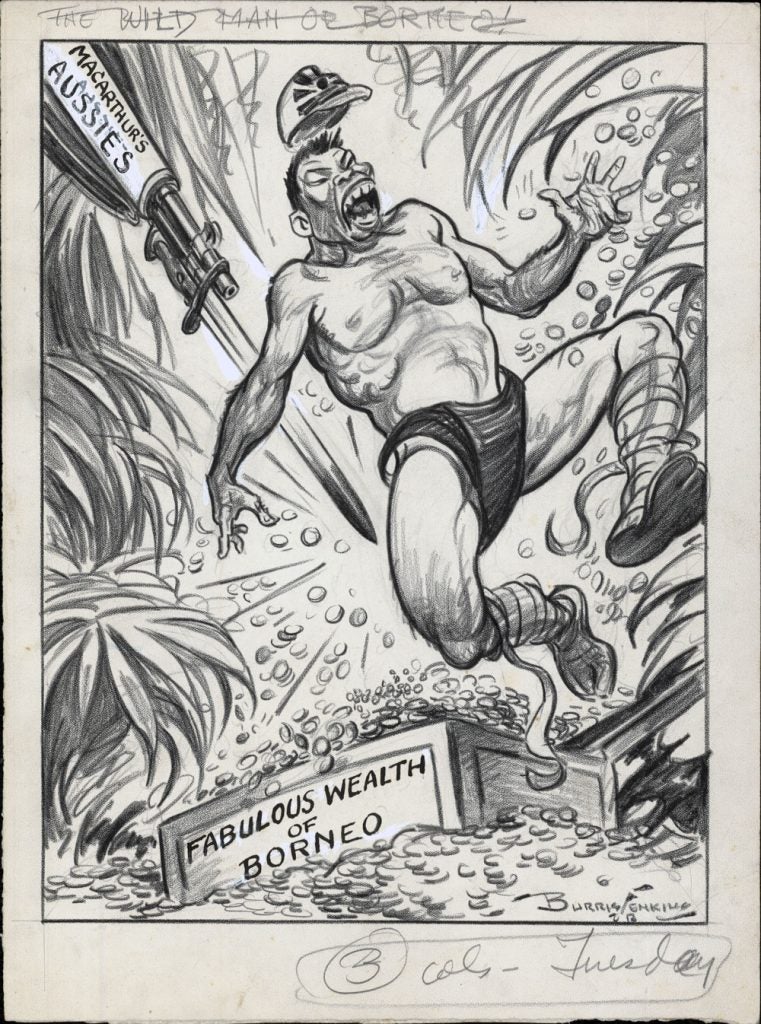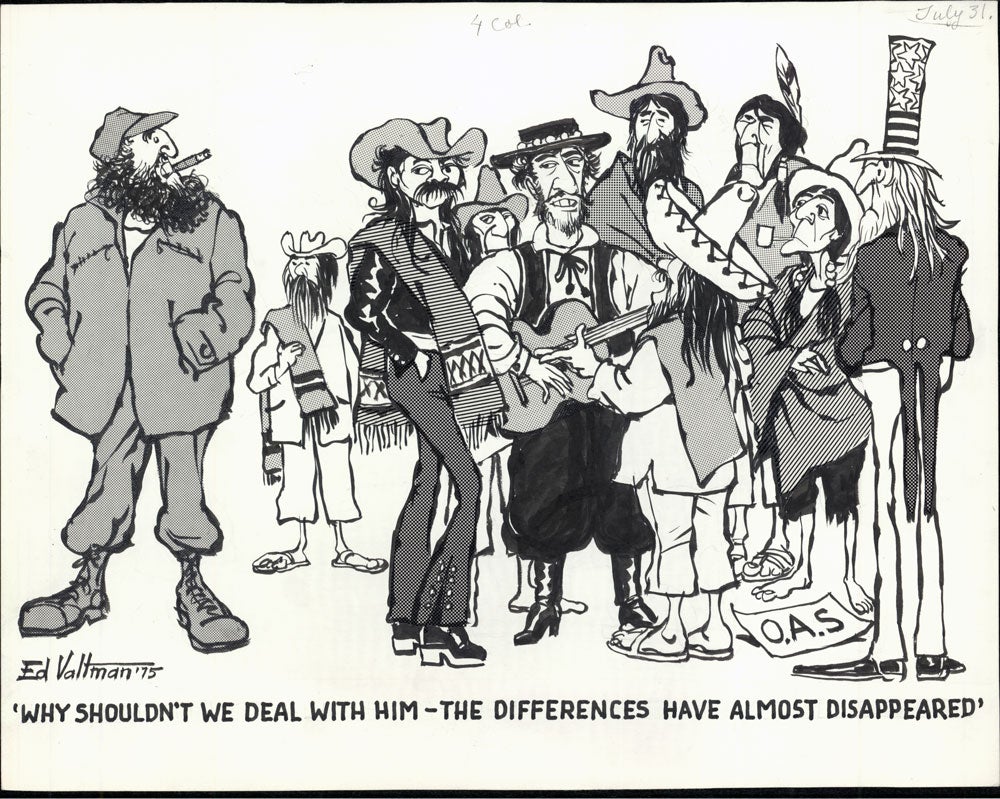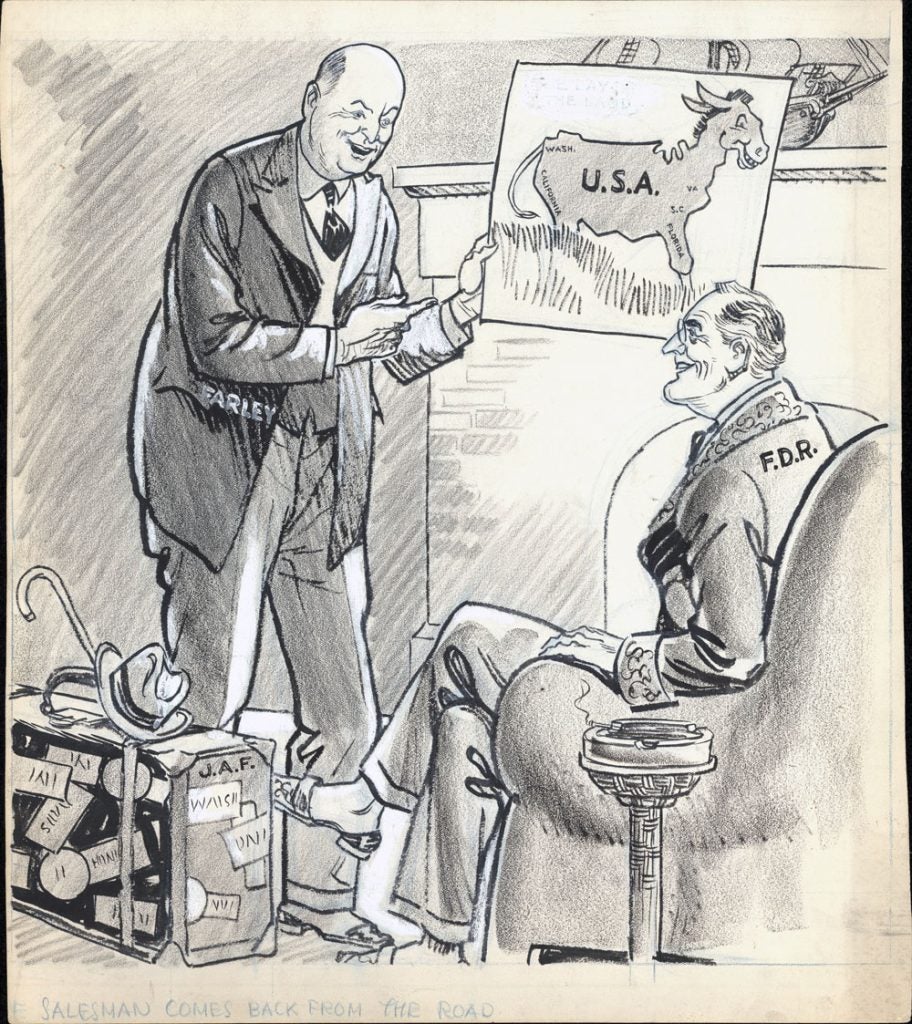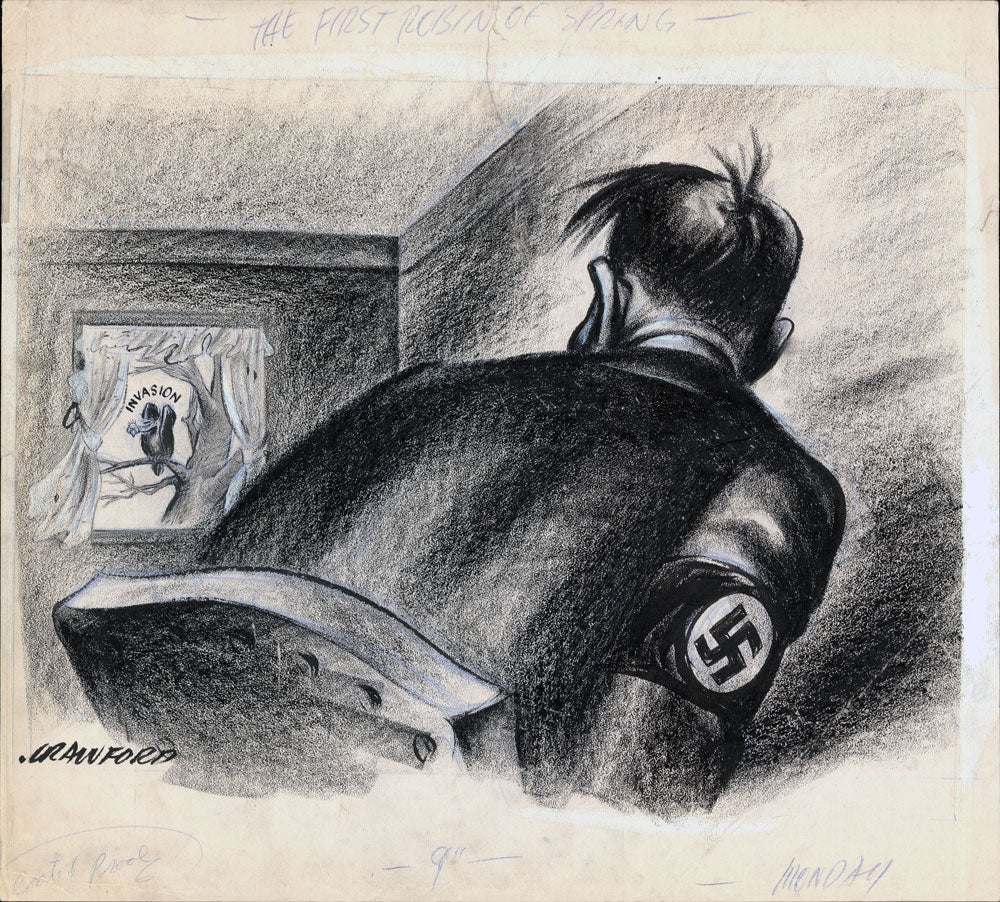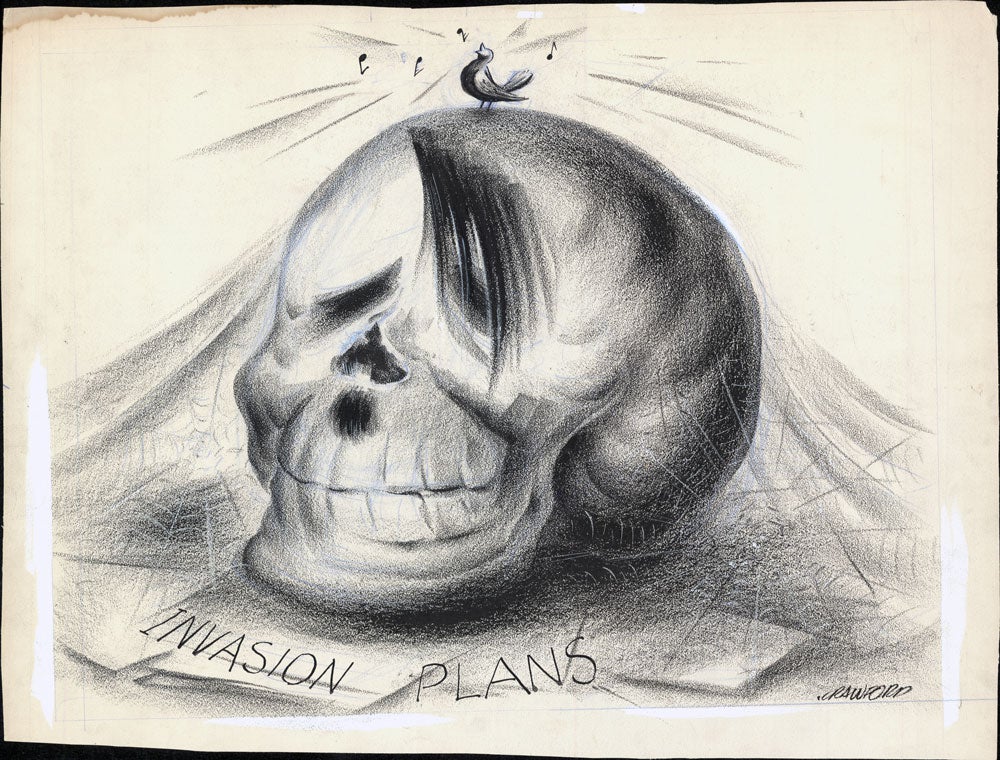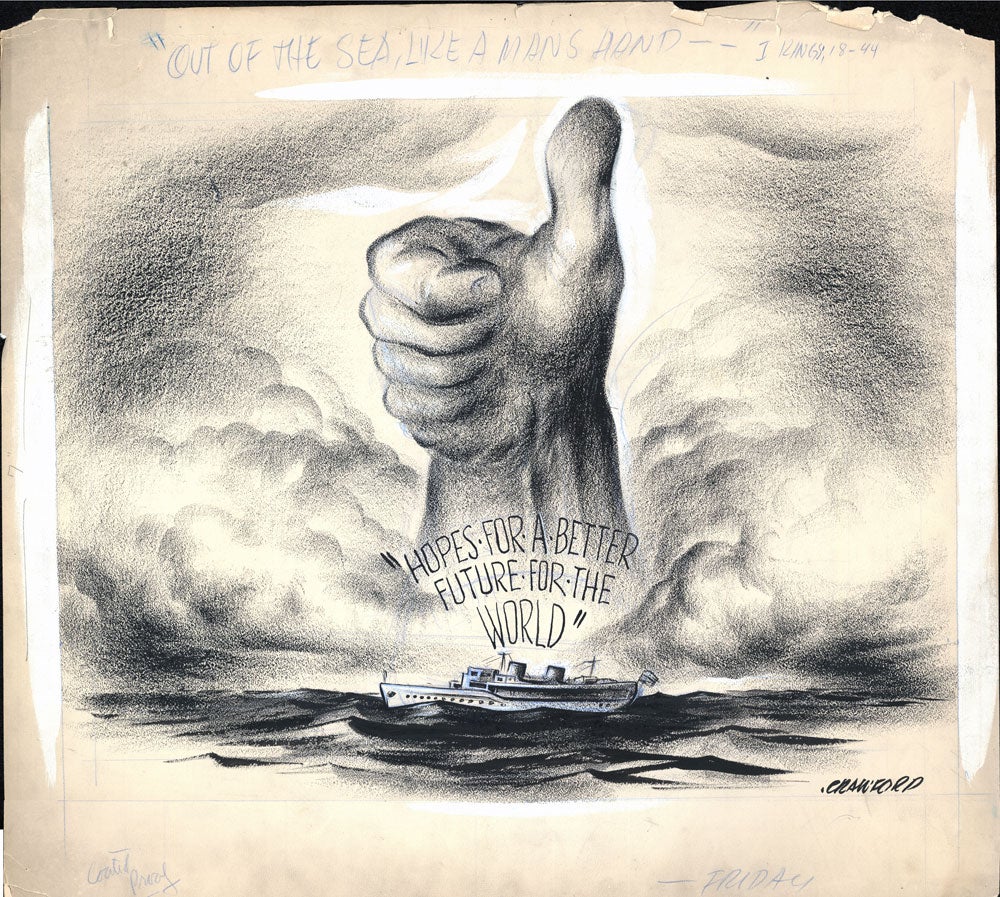
“We Just Grow Tobacco and Cane Sugar…” (December 20, 1980)
by Charles Phillip Bissell (1926 – )
11 x 17.5 in., ink and wash on board
Coppola Collection
In 1960, Boston Globe cartoonist Phil Bissell, working for $25 a day, was handed an assignment that would change his life—and the lives of fans of the brand-new AFL football team coming to Boston. “Sports editor Jerry Nason came to me and he said, ‘They’ve decided to call the team the Boston Patriots. You better have a cartoon ready for tomorrow’s edition.’” Bissel’s “Pat Patriot” cartoon was the Patriot’s logo from 1961-1992.
Cuba’s 1980 five-year plan acknowledged sugar was still the backbone of the island’s economy and called for increasing sugar production 20 to 25 percent in the next five years.
But President-elect Reagan saw Cuba as a solid outpost of the Soviet Union in ways that were not seen since the Kennedy era. The fall of the Soviet Union was still a decade away, and the fight with Gorbachev was high on the Reagan agenda.
On December 20, 1980, Fidel Castro called President-elect Ronald Reagan a threat to peace at the close of the second Communist Party Congress and told a cheering throng of Cubans to use their spare time to train to defend the island nation.
Castro urged the crowd to devote spare hours and part of their vacation to train in a militia to defend Cuba. He attacked the United States and said Cubans ‘prefer a thousand times to die before surrendering. We will not make a single concession to imperialism.’
Castro said the United States had hinted it would lift its blockade of Cuba if the Caribbean island stopped sending troops to other nations and loosened ties with Russia, which provides massive aid to Cuba.
But Castro asserted once again that more than 100,000 Cuban soldiers have fought in such foreign nations as Angola and Ethiopia and said Cuba would not stop sending troops overseas in demonstration of what he termed “internationalism.”
Ironically, Castro said, “As long as the Soviet Union exists, and as long as Cuba exists, these ties will exist. What right could the United States have to tell us who our friends should be.”
In January 1981, Ronald Reagan was inaugurated as the US president tightened the trade embargo against Cuba, instituting the most politically hostile policies since the invasion at Bay of Pigs.


